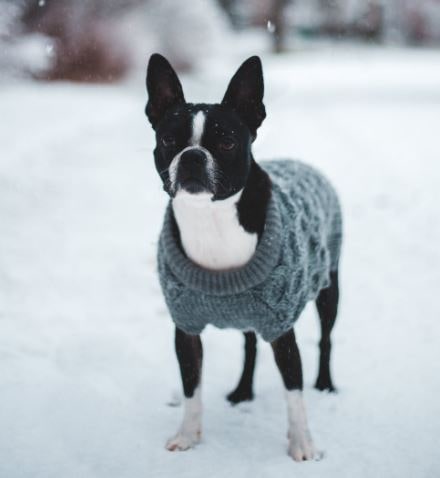8 Tips for Pet Friendly Travel
When taking a vacation that includes the family pet, you shouldn’t wait until the last minute
to consider the animal’s needs. Keeping your pet safe so you can enjoy the time away
together requires planning and preparation.
Tip #1. Visit Your Veterinarian
At least three weeks before traveling, make an appointment to see the veterinarian. While at the veterinary office:
• Tell veterinarian the travel destination, ask if they recommend any additional vaccinations or preventives for that location
• Check to make sure that all vaccinations are up-to-date
• Make certain that parasite preventives are current
If using a once-a-month dose preventive that will lapse while on vacation, make sure to obtain a refill to take on the trip
• If pets require prescriptive medications, check to make sure a prescription refill is not needed while traveling
• If a pet has not been healthy, have veterinarian determine if the animal is fit to travel, and if the mode of travel is safe for its health
• Request a copy of the animal’s health and shot records
• If not already done, microchip pet, just in case your pet is separated from you while on vacation
Tip #2. Bring Emergency Information
- To be fully prepared, a document containing information necessary during an emergency should be compiled and placed in a location for easy access while traveling.
- Include:
- Your contact information
- Emergency contact information of a friend or relative
- Veterinarian’s name, address, telephone number
- In case of an emergency, have a list of contact information for veterinarians and emergency clinics that are available in vacationing area
- Copy of pet’s medical history, shot records, dietary needs
- Prescription information, complete with dosage requirements and dispensing times
- Picture of pet
- Microchip registration information
Tip #3. Pet Identification
- Just in case you and your pet become separated while on vacation, before the trip begins make sure to:
- Check that the information registered with the microchip is registered and up-to-date
- Fit animal with a collar and securely attach its local dog tag, rabies tag, and an identification tag that contains the following information:
- Your name
- Your cell phone number
Tip #4. Safety in Car
- If traveling by car, make sure animal has an area where they can rest and relax in comfort and safety. Much like a seatbelt for people, pets should be protected with a secured strap or harness when the vehicle is moving. If pets are not used to traveling or are not used to being securely contained within a vehicle, before the start of the trip, it is important to:
- Make sure the strap or harness is tailored to fit the animal
- Take pet on short rides to get them used to the motion and to being confined
Tip #5. Crossing State Lines
- When traveling across state lines, certain states require proof of rabies vaccination. Remember to have shot records where they can be easily accessed
Tip #6. Travel by Plane
When considering air travel with a pet, keep in mind:
- Some airlines may only allow animals to travel in the cargo hold, and in that case:
- Breeds that include brachycephalic or snub-nosed dogs such as boxers and bulldogs, and brachycephalic cat breeds such as Himalayan and Persians, should never travel in the cargo hold
- Some airlines have canine breed restrictions
- Most airlines will maintain the right to refuse to board any animals that exhibit any type of aggressive behaviors
- When traveling on an airline that requires animals to travel in a crate, be certain to obtain a crate that matches the airline’s specifications.
Crates should:
- Be big enough for the animal to sit, stand, and rest comfortably
- Include an attached lick water bottle
- Have an attached cop of veterinary records and medication requirements
- Be identified with the pet name, family name, and cell phone contact information
To help pet with this part of the trip:
- Do not wait until the last minute to introduce the animal to the crate, give them time at home to become accustomed to going in and being confined
- Make sure the pet is wearing a collar that is safe and has the proper identification attached
- If necessary, discuss with veterinarian the animal’s need for relaxing techniques or for medications that would be safe to use with animal on the airplane
Tip #7. Airline Reservation
- To make the flight easier:
- When possible, book direct flights
- Book flight during an off-peak time, smaller numbers of passengers mean handlers are not as busy, ensuring better care of the animal
- Travel on the same plane as your pet
- Make sure to let the airline desk and attendant know that your family pet is either with you on board or is in the cargo hold
- Have an extra leash, copy of veterinary records, current picture, and microchip information in carry-on luggage
Tip #8. Ask your Veterinarian if your pet would benefit from Calming products or prescriptions to deal with anxiety or Motion Sickness.
- Natural Calming Products help your pets deal with the stress hormones produced when in the car. I recommend Stress Away Calming Chews, EZ Chew Calming Support and Vetri Science Composure Bite Size Chews.
- Thundershirts can also provide comfort to your pet while in the car.
- There are several prescription medications that can be used for anxiety, for example Clomicalm and Acepromazine.
- There is a prescription medications that can be used for motion sickness, for example Cerenia.
Enjoy the summer and if you can bring your pet along for the ride!
To your pet's good health,
Dr. Barry







